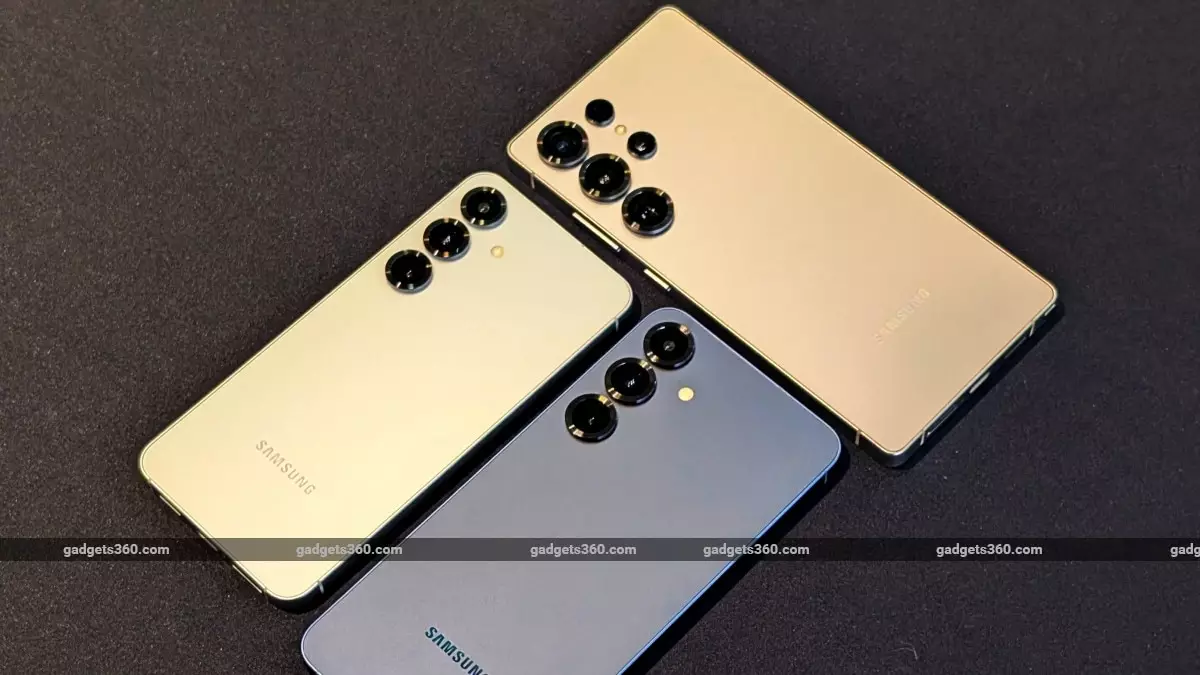The recent unveiling of Samsung’s Galaxy S25, S25+, and S25 Ultra has created significant buzz in the tech community. Beyond the aesthetic upgrades and hardware improvements, what is particularly noteworthy is the introduction of features that streamline user experience, especially in the realm of software updates. The South Korean tech giant’s venture into enhanced update procedures signifies a pivotal moment that might change the game for smartphone users.
Seamless Updates: A Much-Needed Innovation
One of the most remarkable features of the Galaxy S25 series is the support for seamless updates. This technology allows users to apply updates while the phone is operational, drastically reducing downtime that typically occurs during system updates. Historically, rebooting after an update could consume precious time; however, Samsung’s adoption of this technology promises to minimize interruptions. This development emerges as a striking contrast to previous iterations of their devices, marking a notable evolution in Samsung’s approach to updating software.
Samsung has incorporated a newer version of the seamless update mechanism first introduced in Android 11, which utilizes what is known as a virtual A/B update scheme. Unlike the traditional A/B partition framework, where two system partitions are maintained, the current methodology employs a less demanding approach that conserves storage space. It employs a method that enables updates to be installed on a “compressed snapshot,” significantly enhancing efficiency. Such advancements are essential for users who often find themselves juggling storage management alongside their daily mobile tasks.
Interestingly, while other smartphone manufacturers, including Google’s own Pixel line, have utilized seamless updates since their inception, Samsung’s implementation comes later, which raises some eyebrows. With the Galaxy A55 5G being the first Samsung device to feature this technology last year, the S25 series represents a major leap forward. This late adoption underlines the fact that while competitors have already capitalized on this functionality for years, Samsung is now finally stepping up to meet user expectations.
Implications for Users and the Market
The integration of seamless updates into the Galaxy S25 lineup not only enhances user experience but also sets a new benchmark within the industry. Users are likely to appreciate the lack of extensive reboot times, allowing them to maintain productivity without the usual wait associated with software installations. This development could also influence other manufacturers to prioritize user-centric features in future smartphone releases, fostering a competitive landscape focused on minimizing interruptions for consumers.
The Samsung Galaxy S25 series’ launch marks a significant moment in the evolution of smartphone software updates. The introduction of seamless updates not only reflects Samsung’s commitment to enhancing user experience but also highlights the ongoing importance of innovation within a fast-paced tech environment. As consumers become increasingly accustomed to seamless functionality, such shifts will dictate market trends and shape consumer expectations for years to come. This update mechanism is not just a minor improvement—it’s a transformational feature that resonates with the modern user’s need for efficiency and minimal disruption.

